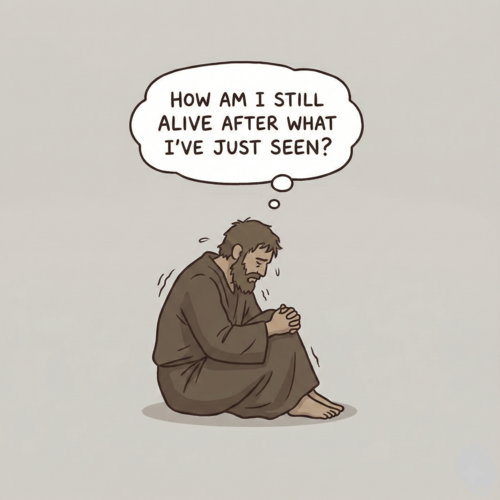Archaeology Endorses Scripture: Papyri and Dead Sea Scrolls
The reliability of the Bible has long been a subject of debate among scholars, historians, and believers. However, two monumental archaeological discoveries—the Dead Sea Scrolls and various ancient papyri, between 1920 and 1956—provide compelling evidence affirming the historical reliability of the Scriptures. These finds have shed light on the textual accuracy, historical context, and authenticity of the biblical manuscripts, reinforcing the faith of believers and intriguing scholars worldwide.
Archaeology Endorses Scripture: The Dead Sea Scrolls
The Dead Sea Scrolls, discovered between 1947 and 1956 in the Qumran Caves near the Dead Sea, represent one of the most significant archaeological finds of the 20th century. These ancient Jewish texts include some of the oldest known manuscripts of the Hebrew Bible, dating from the third century BCE to the first century CE.
- Textual Integrity and Consistency: One of the most compelling aspects of the Dead Sea Scrolls is their contribution to confirming the textual integrity of the Hebrew Bible. Prior to their discovery, the oldest known manuscripts of the Hebrew Bible dated back to the 10th century CE, specifically the Masoretic Text. The Dead Sea Scrolls pushed this timeline back by a millennium, providing manuscripts such as the Isaiah Scroll that are over 2,000 years old.
Comparative analysis between the Dead Sea Scrolls and the Masoretic Text reveals a remarkable consistency. For example, the Great Isaiah Scroll, found among the Dead Sea Scrolls, is almost identical to the Masoretic Text of Isaiah, with only minor variations that do not affect the fundamental meaning of the text. This consistency over such a long period underscores the meticulous care with which Jewish scribes copied the Scriptures, affirming the reliability of the biblical text we have today .
- Historical and Cultural Context: The Dead Sea Scrolls also provide invaluable insights into the historical and cultural context of the Second Temple Judaism era. The scrolls include not only biblical manuscripts but also sectarian writings, hymns, and commentaries, which shed light on the beliefs, practices, and expectations of the Jewish community at Qumran. Understanding these cultural and religious contexts enhances our comprehension of the New Testament, written in a milieu heavily influenced by Jewish thought and practice. This deeper historical understanding supports the coherence and continuity of the biblical narrative .
Archaeology Endorses Scripture: Ancient Papyri
Alongside the Dead Sea Scrolls, the discovery of ancient papyri has significantly bolstered the credibility of the New Testament. Key finds include the Rylands Library Papyrus P52, the Bodmer Papyri, and the Chester Beatty Papyri.
- The Rylands Library Papyrus P52: The Rylands Library Papyrus P52, also known as the St. John’s Fragment, is the oldest known fragment of the New Testament, dating to approximately 125 CE. It was acquired by Bernard Grenfell in Egypt in 1920, but its significance was not recognized until it was published by C.H. Roberts in 1935. The small fragment contains portions of the Gospel of John (John 18:31-33, 37-38), providing concrete evidence that the Gospel of John was in circulation within a generation of the events it describes. The early dating of P52 supports the traditional view that the Gospels were written by eyewitnesses or close associates of eyewitnesses, lending credibility to their accounts .
- The Bodmer Papyri: The Bodmer Papyri, dating from the 2nd to 4th centuries CE, include significant portions of the Gospels of Luke and John, as well as other New Testament writings. They were discovered in Egypt in 1952 and later purchased by Martin Bodmer, a Swiss collector. They were subsequently named after him. These manuscripts help bridge the gap between the original autographs and later copies, demonstrating the textual stability of the New Testament over time. The Bodmer Papyri, like the Dead Sea Scrolls, show a high degree of consistency with later manuscripts, reinforcing the reliability of the New Testament texts we have today.
- The Chester Beatty Papyri: The Chester Beatty Papyri, dating from the 3rd century CE, contain extensive portions of the New Testament, including the Gospels, Acts, and Pauline Epistles. These papyri provide further evidence of the early and widespread dissemination of New Testament writings. The textual consistency found in these manuscripts, when compared with later copies, underscores the care with which early Christians preserved these sacred texts. The Chester Beatty Papyri were found in Egypt in 1930, and were purchased by the American collector Chester Beatty and first published between 1933 and 1936.
Conclusion: Faith and Reason United
The discoveries of the Dead Sea Scrolls and ancient papyri have provided overwhelming evidence supporting the reliability of the biblical texts. These ancient manuscripts demonstrate the remarkable consistency and accuracy with which the Scriptures have been transmitted over the centuries. They also offer rich insights into the historical and cultural contexts of the biblical narratives, enhancing our understanding and appreciation of the Bible.
Believing in the reliability of the Bible is not merely a matter of blind faith; it is a position grounded in solid historical and archaeological evidence. The meticulous preservation and transmission of these texts, alongside their consistency over millennia, attest to their authenticity and authority.
References
- Wise, Michael O., Abegg, Martin G. Jr., and Cook, Edward M. The Dead Sea Scrolls: A New Translation. HarperOne, 2005.
- VanderKam, James C., and Flint, Peter. The Meaning of the Dead Sea Scrolls. HarperOne, 2002.
- Schiffman, Lawrence H. Reclaiming the Dead Sea Scrolls. Yale University Press, 1994.
- Rylands Library Papyrus P52: A Study of the Text and Its Significance.
- The Bodmer Papyri: Early Witnesses to the New Testament Text.
- The Chester Beatty Biblical Papyri: Descriptions and Texts of Twelve Manuscripts on Papyrus of the Greek Bible.
Related Reads:
- Connecting the Dots: How Undesigned Coincidences Confirm Bible Reliability
- Historical Reliability of the Bible: Astonishing Archaeological Finds
- Canonicity: The Journey to the Bible We Know Today
- Unearthing the Past: Excavation Findings that Validate Bible Narratives
- Bible ‘Contradictions’: Hurdles to Faith? Not Quite
Editor's Pick

The Throne-Room Vision: Who Did Isaiah See?
The scene is unforgettable: Isaiah stands in the temple, and suddenly the veil between heaven and earth tears open. He [...]

The Angel of the Lord: Can We Be Certain It Was Christ All Along?
Throughout the Old Testament, a mysterious figure appears: the Angel of the LORD. He speaks as God, bears God’s name, [...]
SUPPORT US:
Feel the Holy Spirit's gentle nudge to partner with us?
Donate Online:
Account Name: TRUTHS TO DIE FOR FOUNDATION
Account Number: 10243565459
Bank IFSC: IDFB0043391
Bank Name: IDFC FIRST BANK






